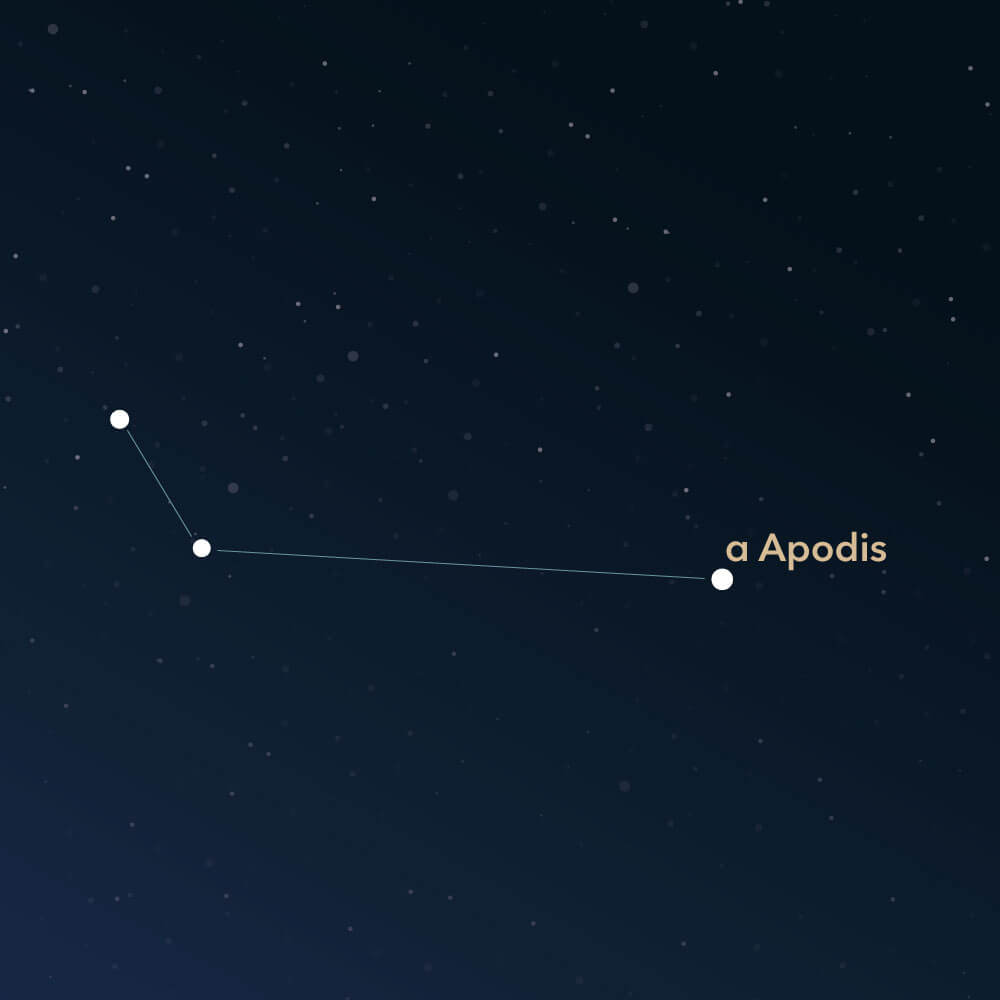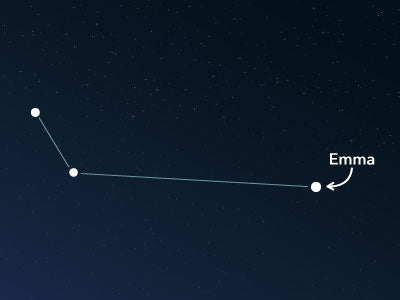The constellation Apus
Caractéristiques
- Nom latin
- Apus
- Hémisphère
- Hémisphère sud
- Visibilité
- All year round
- Région
- 206 deg²
- Étoile la plus brillante
- α Apodis (HIP number 72370)
- Spécialités
- Galaxies, globular clusters

The Apus symbolizes a bird of paradise. Due to the mistaken belief the bird had no feet, the name was translated to "without feet" in Greek. It is an inconspicuous constellation near the southern celestial pole. It was introduced by Dutch sailors and initially mistranslated on new star charts. There are only a few deep-sky objects located in its area.
Hemisphere, visibility, and area
The constellation Apus is situated in the southern sky near the celestial pole, making it visible from the entire southern hemisphere and only visible up to the 6th latitude north of the equator. This corresponds to regions such as the southernmost part of Sri Lanka or the city of Medellin in Colombia. It is never visible in areas such as the United States, Canada, or Central Europe.
South of the equator, Apus is circumpolar, meaning it can be observed year-round. July, in particular, offers a good view of the constellation.
It stretches over approximately 206 square degrees in the night sky, making it the 67th largest among all 88 constellations.
In star charts, the constellation is typically visualized with its three main stars connected to form a bent line. The brightest star is α Apodis (Alpha Apodis), with an apparent magnitude of only roughly 3.8, making it not particularly bright. It is an orange giant star located about 432 light-years away.
The inconspicuous shape and faint stars make it difficult to find the constellation in the night sky. It can be helpful to orient oneself using the adjacent constellations. Apus has seven neighbors, including the Triangulum Australe, the Circinus, the Musca, and the Chamaeleontis. The Octans, the Pavo, and the Ara also border it.
Specialties in the constellation
In the area of the Apus are some faint objects that are difficult to perceive with the naked eye, including galaxies and globular clusters.
NGC 5612 is one of the galaxies in this region. It is a spiral galaxy with an apparent magnitude of around 12.2. Its distance from the Milky Way is estimated to be about 113 million light-years. The British astronomer John Herschel discovered it in May 1835.
The globular cluster with the catalog number NGC 6101 (or Caldwell 107) was found only a few years earlier. The Scottish astronomer observed the object in June 1826. NGC 6101 has an apparent magnitude of about 9.2. Its distance from the Milky Way is estimated to be approximately 36,500 light-years. A telescope is required to resolve individual stars in the cluster. Research shows that the cluster contains an unusually high number of black holes.
History
At the end of the 16th century, a Dutch fleet traveled to the legendary Spice Islands (now Indonesia) to establish new trade relations. For the long voyage, they also received the task from astronomer Peter Plancius to collect more accurate data about the stars.
The captain and navigator Pieter Dierkzoon Keyser, as well as the cartographer Frederick de Houtman, eventually collected the positions of around 135 stars. Peter Plancius incorporated this data into his star charts, resulting in twelve new constellations.
Among the newly defined constellations was the present-day Apus. It was initially introduced with the Dutch name "De Paradijs Voghel" (Latin: Paradysvogel Apis Indica).
A few years later, the constellation was included in the new sky atlas by Johann Bayer as "Apis Indica." The translation means "Indian bee." A mistake by the engraver probably led to the erroneous designation of the constellation because "Avis Indica" (English: Indian bird) would have been a more appropriate name.
To avoid confusion, the Bird of Paradise was later referred to as "Apus," and the constellation Fly, which was actually called "Apes," was given the Latin name "Musca."
PubliéLire d'autres articles intéressants

An overview of all 88 constellations
Learn more about all 88 constellations and read interesting information about the mythology, visibility, and features.

Application Planétarium
Découvrez le ciel nocturne avec notre application de planétarium !
Disponible pour iOS et Android.

Nommez une étoile dans la constellation Bird-of-Paradise
Name a star in a constellation and create something that lasts for eternity.